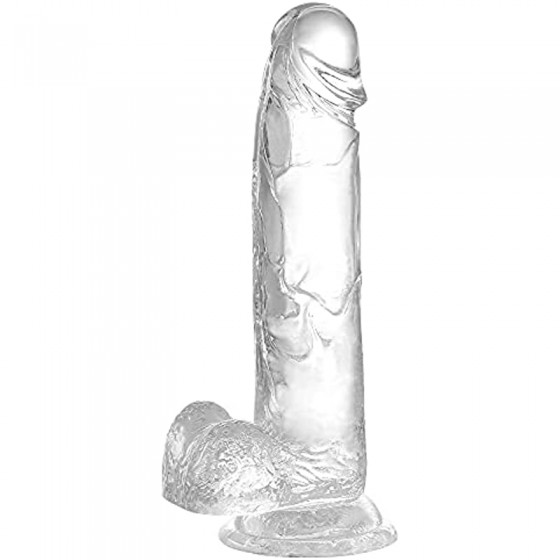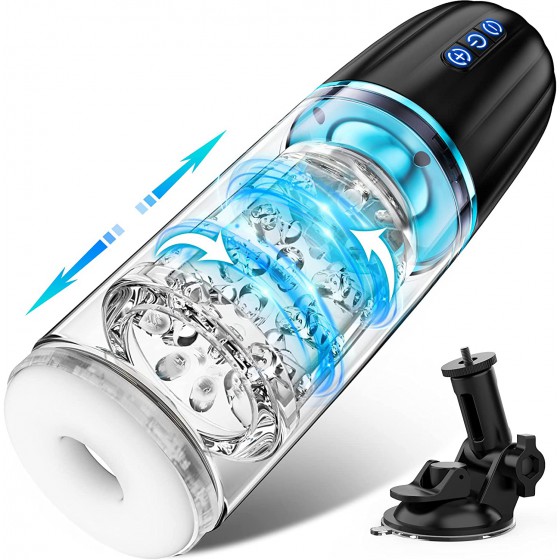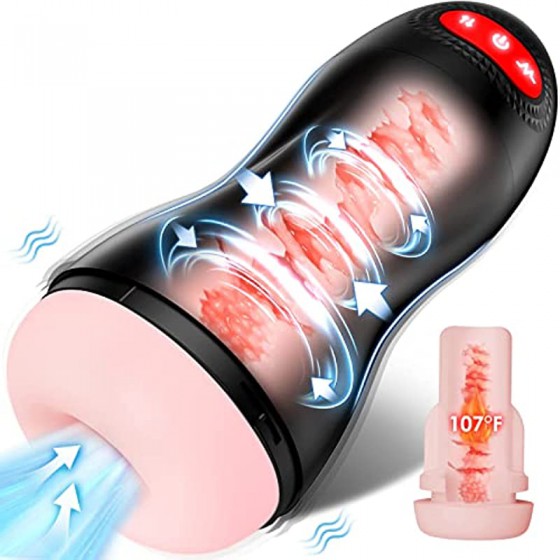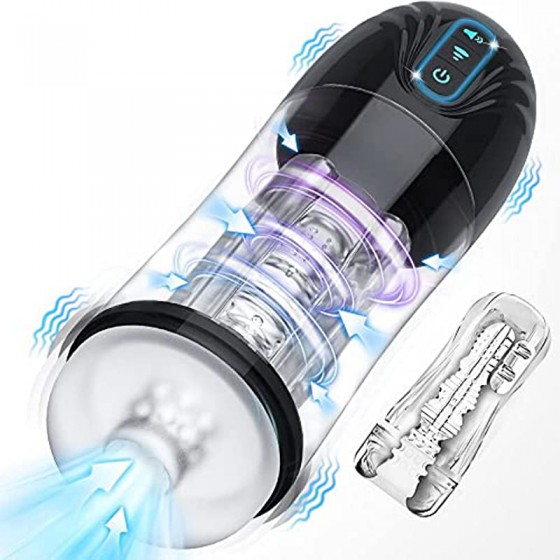Unraveling semen
In a biological sense, the birth of a new life occurs at the moment when sperm and egg combine. For the success of this moment of union, semen plays a decisive role.
Semen as referred to in modern reproductive physiology is composed of liquid secreted by the seminal vesicles, prostate, and bulbourethral glands, and sperm produced by the testicles and stored in the epididymis. A normal male ejaculation volume is about 1-6 ml, which contains 200-500 million sperm. As the carrier and guardian of sperm, the primary task of semen is to safely transport a certain amount of sperm into the female genitals to gain a chance of conception. Semen is weakly alkaline, which can neutralize acidic substances in the vagina and is beneficial to sperm activity. Semen has the function of providing sperm with energy and nutrients to ensure normal reproductive activities. So we can without exaggeration call semen the messenger of life from men.
However, in daily outpatient clinics, many people are often confused about common sense issues such as the amount, thickness and color of semen, causing a lot of unnecessary panic.
Concerns about "more and less"
A college student wrote to say that he had frequent wet dreams in recent times. At first, the amount of semen was large once or twice, and then the amount of semen increased. The less, he was worried that all the semen would be lost. Some newlywed couples have more frequent sex during the honeymoon stage, and the amount of semen they ejaculate is larger at the beginning, but later it becomes less and less, so they also have similar concerns. There are also some young men who find that after masturbating, their semen is significantly less than before, down to only a few drops. They are also worried that it will affect their future sexual life and fertility.
In fact, these worries are unnecessary. From the first nocturnal emission to the end of life, there is always semen in a man's body. The amount of semen in a man cannot be calculated. Frequent wet dreams, masturbation, and sexual intercourse will result in greater semen consumption. However, the seminal vesicles, prostate, and bulbourethral glands, like other glands in the body, will secrete continuously as long as they function normally, so semen will not be exhausted. Some young men masturbate frequently, once for several days or even several times a day, which will significantly reduce the amount of semen. The reason is very simple. Although the human body has a strong ability to produce sperm and semen, which can usually be replenished in 1-2 days after ejaculation, if ejaculation is too frequent, a situation of "supply exceeding demand" will still occur. The lack of semen caused by this situation is certainly not a disease, and there is no need to worry at all. If you prolong the interval between ejaculation, it will be cured without treatment. However, if the amount of semen discharged every time is too small, it would be pathological. Among male infertility cases, infertility caused by too little semen (less than 1 ml) accounts for about 2% of the total cases. Low semen may be caused by abnormal testicular function, endocrine disorders, seminal vesicles, prostate disease or urethral stricture. This type of low semen is easy to identify. You only need to abstain from sex or masturbate for 5-7 days before ejaculating semen again. If the semen is more than before, there is no disease. Otherwise, it is pathological oligospermia.
So, is too much semen good? Similar to too little semen, too much semen, such as more than 7 ml, is also a disease, mostly caused by inflammation of the seminal vesicles. The essence of excessive semen is excessive secretion or leakage of seminal plasma, while the total number of sperm has not changed. This will obviously cause the density of sperm in semen to decrease, affecting the chances of conception. Excessive secretion of seminal plasma will interfere with sperm activity and function due to the influence of pathological factors such as inflammation. In addition, excessive semen volume will cause a large amount of sperm to be lost from the vagina after sexual intercourse, reducing the chance of conception. Therefore, more semen is not always better.
Concerns about "Thinness and Thickness"
A young man told the doctor that after masturbating, he found that the semen he ejaculated was as thin as water. He said that semen used to be sticky, but now it is like water. He asked: Is it caused by frequent masturbation? Will it cause infertility? There is also a couple who have been married for three years and have been living together since. , have normal sex 2-3 times a week, neither party takes contraceptive measures, but the woman has not become pregnant so far. After examination, the woman's reproductive organs, menstruation, and ovulation functions were normal, and the man's sperm count, shape, and activity were also normal. However, it took more than an hour for the ejaculated semen to change from jelly to thin. They wanted to know this Does jelly-like semen affect pregnancy?
Semen originally existed in a liquid state in the reproductive tract. When semen is ejected from the mouth of the penis, it will immediately turn into a milky white or yellowish translucent jelly under the action of a protein-like substance secreted by the seminal vesicles. This is the semen character that people usually see. At this time, the sperm is "coagulated" in the semen and cannot swim freely. After 5-30 minutes, with the participation of a hydrolase secreted by the prostate, the semen liquefies and automatically changes from jelly to thin water. This change process of sperm has very important physiological significance: it is in a liquid state at first to facilitate the ejaculation of semen; then it forms a gel shape, which helps the semen stay in the vagina for a long time and allows the sperm to fully rest and be capacitated; once liquefied, The sperm will have enough energy to swim quickly, looking for eggs to "match". If diseases such as inflammation of the prostate or seminal vesicles occur, the semen of these patients may not liquefy for a long time or may not liquefy completely due to lack of secretion or destruction of hydrolase. The phenomenon that the ejaculated semen liquefies after half an hour or even an hour is a pathological phenomenon, which is medically called non-liquefaction of semen.
Because the viscosity of semen is too high, sperm cannot swim normally, which will naturally cause infertility. Therefore, the morphological changes of semen coagulation and liquefaction can protect sperm function and normal fertility. Therefore, patients with abnormal semen liquefaction should be actively treated.
In addition, infertile patients with high semen viscosity can inject a few strands of semen that begin to contract and eject into the vagina during ovulation, and then withdraw the penis, and the second half of the semen will be discharged from the body, that is, Ejaculate in stages to reduce the viscosity of semen, facilitate sperm swimming, and increase the chance of conception.
Concerns about "color"
In sexual medicine consultation clinics, many men tell doctors that their semen is sometimes milky white, sometimes light yellow, and some say it is red or light red. They want to know what color normal semen should be, and whether yellow or red is pathological.
Generally speaking, normal semen should be translucent and milky white like egg white. The semen of a person who has not ejaculated for a long time may be light yellow and thicker.
When there is inflammation in the male reproductive tract, the semen may turn yellow, and a large number of pus balls can be seen under the microscope. Some men may find that their semen turns pink or is mixed with blood after ejaculation. This often surprises them and makes them think they have a terminal illness. In fact, most of this condition is caused by inflammation of the seminal vesicles. It is a disease with mild symptoms and good prognosis. When the seminal vesicles suffer from inflammation and cause congestion and edema, they can easily bleed. When the secretions and semen from the seminal vesicles pass through the seminal vesicles, they will mix with blood to produce hematospermia. In addition, prostatitis often involves the seminal vesicles and can also produce hematospermia. In this regard, as long as sexual intercourse is suspended and antibiotics and hemostatic drugs are taken under the guidance of a doctor, the condition can often be controlled.
Of course, hematospermia can also occur in seminal vesicles and prostate tumors, but generally speaking, the characteristics of cancerous hematospermia are persistent and gradually worsening, which is different from the transient hematospermia caused by inflammation. In addition, tuberculosis, schistosomiasis or systemic blood system diseases can occasionally cause hematospermia, and these conditions should be treated accordingly. It has been clinically confirmed that when there is bleeding in the reproductive tract, the semen will be red or light red, and a large number of red blood cells can be seen under the microscope. Some may look brownish red or soy sauce color to the naked eye because the semen contains a large number of red blood cells. For these pathological hematospermia, the cause should be promptly diagnosed and treated.
The occurrence of hematospermia is also physiological. There are three situations: First, during ejaculation, the seminal vesicle undergoes strong spasmodic contraction, causing the permeability of the capillaries in the seminal vesicle wall to change, causing the red blood cells in the blood vessels to change. Penetrate into the semen; secondly, when the frequency of sexual life is low, the secretion in the seminal vesicles continues to increase, which increases the pressure. After ejaculation, the pressure in the seminal vesicles suddenly decreases, causing the capillaries to rupture and bleed; thirdly, the semen of men with allergic constitution dissolves tissue. The enzymatic activity of fibrin increases, causing damage to the capillaries on the walls of the seminal vesicles and causing bleeding. Most of this type of physiological hematospermia can be cured without treatment, so there is no need to worry about it.
"High and low" test results
Semen laboratory examination is one of the ways to understand male fertility, but many people do not know much about this knowledge. Semen examination involves many links, related to various factors such as abstinence time, method of taking, container used, transportation method, inspector's work responsibility, and the subject's own physiological fluctuations. If the doctor's instructions are unclear, or the subject fails to follow the doctor's instructions, there may be "big ups and downs" in semen indicators, which will affect his diagnosis and medication.
In order to have an accurate semen test, you must first pay attention to collecting the semen correctly. You should do the following: ① abstain from sex for 3-5 days; ② use a clean container provided by the hospital to masturbate and take a sample, after obtaining all the semen Send for examination immediately (within half an hour), and pay special attention to keeping warm in winter; ③ If it is the first time to see a doctor for sampling, it can be repeated 1-2 times every other week. This test can more accurately reflect the actual situation.
Since there are many factors that affect the test results, such as errors in collection methods, genitourinary system diseases, etc., which can cause abnormal test results, the test results must be analyzed correctly. For example, the normal range of sperm count is generally between 60 million and 120 million per milliliter. Anything below or above this range can be considered abnormal. However, clinically, some people with sperm counts of less than 60 million per milliliter can still have children. Therefore, abnormal test results cannot categorically diagnose that the man is infertile, but must be judged based on clinical manifestations and multiple semen test results.













